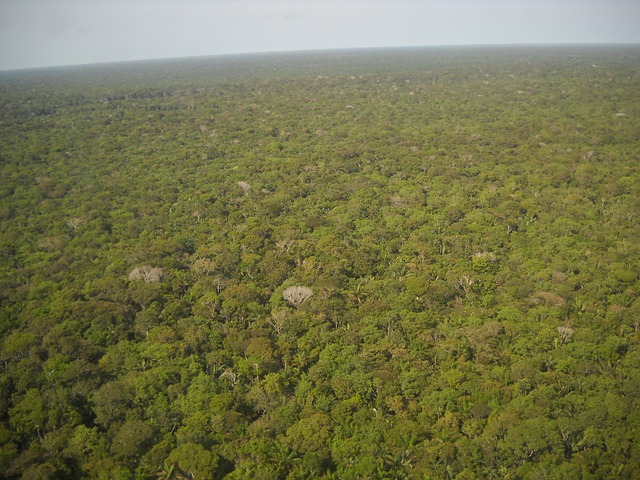El Niño’s long-term effects are expected to cause an intense season of fire in the Amazon, according to the 2016 fire forecast for this dry season from NASA and the University of California, Irvine.
The weather conditions brought on by El Niño in 2015 and early 2016 had a dramatic effect on rainfall patterns globally. In the Amazon, the drought decreased the amount of rainfall during the wet season, leaving the area at its driest at the beginning of the 2016 dry season since 2002, as shown by NASA satellite data, Phys.org reports.
Because of these factors, wildfire risk for the dry months of July to October this year are now at an all-time high, exceeding the fire risk in 2005 and 2010 when wildfires burned large swaths of the Amazon rainforest, said Doug Morton, an Earth scientist with NASA’s Goddard Space Flight Center, who was involved in the fire forecast. Morton said,
Severe drought conditions at the start of the dry season set the stage for extreme fire risk in 2016 across the southern Amazon.
The Amazon fire forecast is created using an analysis of the relationship between climate and active fire detections from NASA satellites. The forecast predicts the severity of fires during the region’s dry season. It was developed in 2011 by scientists at NASA’s Goddard Space Flight Center and the University of California, Irvine. This forecast model is primarily focused on the effects between sea surface temperatures and fire activity. When sea surface temperatures are warmer in the tropical Pacific and Atlantic oceans, rainfall is shifted away from the Amazon, increasing the risk for fires to happen during the dry months.
The forecast team also makes use of data on groundwater storage from the joint NASA/German Aerospace Center (DLR) Gravity Recovery and Climate Experiment (GRACE) mission to track changes in groundwater during the dry season. GRACE measurements become a stand-in for the dryness of soils and forests.
The NASA and UC-Irvine scientists have worked with officials and scientists in South America to inform them of the forecasts yearly. Liana Anderson, from the National Center for Monitoring and Early Warning of Natural Disasters (CEMADEN), said that “fire forecasts three to six months before peak fire activity are important to identify areas with higher fire probability for integrated planning in support of local actions.”
Conditions for 2016 due to El Niño are much drier than in 2005 and 2010, the last years the region suffered from drought. The scientists have also developed a web application to monitor the development of the Amazon fire season in real time. Projected fire emissions are updated on a daily basis, based on the activity between fire detections, which are made by the Moderate resolution Imaging Spectroradiometer (MODIS) instrument on NASA’s Terra satellite and fire emissions information from the Global Fire Emissions Database (GFED) in the past years. As of now, the Amazon has seen more fires than those years, which aligns with the fire severity forecast.
UC-Irvine scientists Jim Randerson, who worked with UC-Irvine scientist Yang Chen on making the forecast model, said, “When trees have less moisture to draw upon at the beginning of the dry season, they become more vulnerable to fire, and evaporate less water into the atmosphere. This puts millions of trees under stress and lowers humidity across the region, allowing fires to grow bigger than they normally would.”
Fires in the Amazon have impacts extending not just locally, but regionally and long-distance as well.
Agricultural fires in the nearby areas could do damage to croplands and Amazon forests, and even slow-moving forest fires can cause serious environmental catastrophes. The cumulative effect of all kinds of fires in the Amazon includes massive smoke plumes that degrade air quality, increasing asthma and respiratory problems. Smoke from Amazon fires also flow towards major urban cities in Brazil, like São Paulo and Rio de Janeiro, raising air pollution concerns.
Scientists have been working with South American officials to announce the results of the fire forecasts to the rest of the continent and increase awareness. They say their work could lead to better wildfire forecasts in other parts of the world, as the team has identified 9 other regions outside of the Amazon where fire risks can be predicted 3 to 6 months ahead of fire season. The work may make it possible to build functional seasonal fire forecasts for Central America and also for countries in Southeast Asia.
























